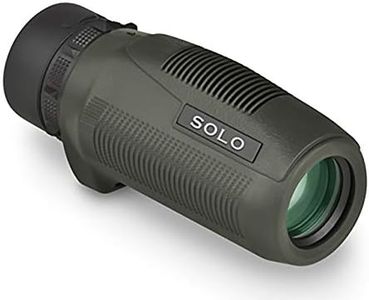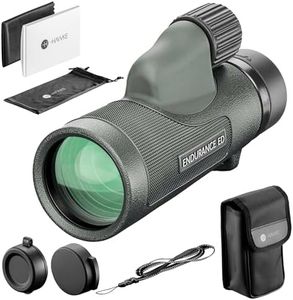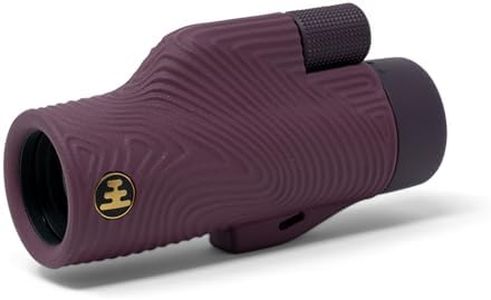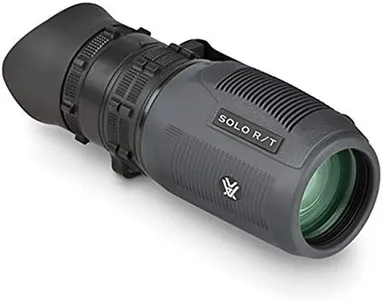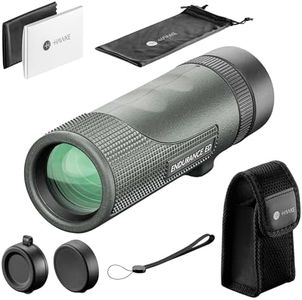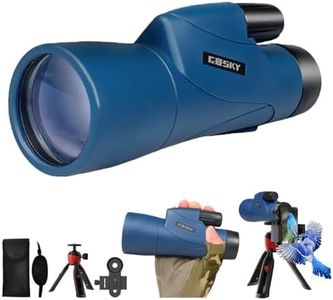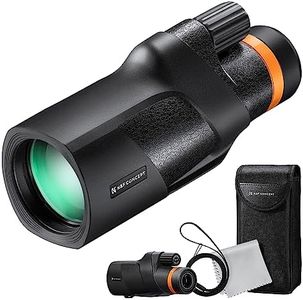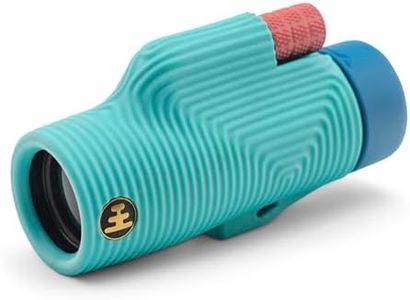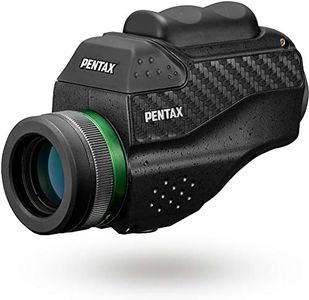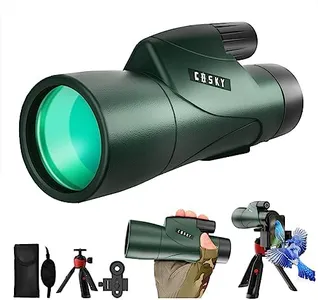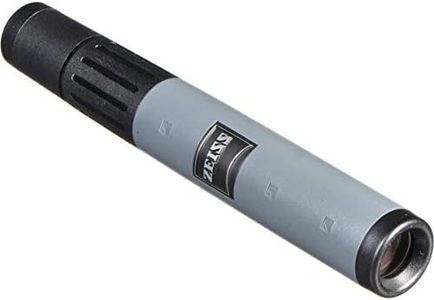We Use CookiesWe use cookies to enhance the security, performance,
functionality and for analytical and promotional activities. By continuing to browse this site you
are agreeing to our privacy policy
10 Best Monoculars
From leading brands and best sellers available on the web.#1
Winner
Buying Guide for the Best Monoculars
When looking to buy a monocular, it’s all about finding the right balance between how much detail you want to see and how portable and easy to use you need the device to be. Monoculars are compact, one-eye alternatives to binoculars and are used for a wide range of activities—from hiking and birdwatching to concerts and sporting events. To make the best choice, you’ll want to understand what key features matter most for your intended use and how they impact performance.MagnificationMagnification tells you how much closer an object will appear compared to viewing with the naked eye. Common values range from 6x to 12x, where 'x' denotes how many times nearer the image appears. Lower magnification (6x-8x) is great for wider views and is easier to keep stable, making it ideal for general use and children. Higher magnification (10x-12x) brings distant objects even closer, but may be harder to hold steady and can narrow your field of view. Choose lower magnification if you’ll be using the monocular for scanning landscapes or on-the-go activities, and a higher magnification for detailed observation of distant subjects.
Objective Lens DiameterThe objective lens diameter, measured in millimeters, is the size of the front lens and determines how much light enters the monocular. A larger lens allows more light, providing brighter and clearer images, especially in low-light situations. Typical sizes range from 20mm to 42mm. Smaller diameters make the monocular lighter and more compact, suitable for carrying around or casual daytime use. Larger diameters are heavier but are better for use at dawn, dusk, or in shadowy environments. Pick a size based on when and where you’ll be using your monocular most often.
Field of ViewField of view is how wide an area you can see through the monocular, usually described in feet or meters at a particular distance. A wider field of view helps you spot and follow moving objects like birds or athletes, but usually comes with lower magnification. A narrower field of view is more suited to observing single, distant subjects in detail. Choose a wide field if you want to observe action or scan broad areas, and a narrow field when your goal is detailed examination of stationary subjects.
Close Focus DistanceClose focus distance is the shortest distance at which the monocular can clearly focus on an object. This can vary from about a meter (three feet) to several meters. A shorter close focus distance is important if you plan to look at nearby objects, such as insects or flowers. For general wildlife or scenery viewing, this spec is less critical, but if macro observation excites you, choose a monocular with a smaller close focus value.
Weight and SizeWeight and size affect how easy it is to carry and handle the monocular. Compact, lightweight models fit easily in a pocket and are comfortable for one-handed use—great for hikers or travelers. Larger, heavier models may offer brighter images or better features, but they can be bulky and tiring to use for long periods. Pick a size that matches your portability needs and how much room you'll have for carrying it.
Weather ResistanceWeather resistance refers to how well the monocular can withstand rain, dust, and rough conditions. Many monoculars are labeled as waterproof or water-resistant, and some are also fog-proof, which helps prevent the lenses from misting up in changing temperatures. For outdoor use or trips where weather can be unpredictable, a weather-resistant monocular will last longer and work reliably. Opt for robust weather resistance if you plan on using your monocular in nature or harsh environments.
Eye ReliefEye relief determines how far your eye can be from the eyepiece while still seeing the entire field of view. This is especially important for glasses wearers. Longer eye relief (usually 15mm or more) means you can use the monocular comfortably with glasses. If you wear glasses, check for models with ample eye relief to ensure comfort during use.

